How Impactful are your Staff Meetings?

Impactful is a somewhat subjective term. What does that even mean? How Impactful are your staff meetings? We define it as a meeting where all attendees are invested, present, and productive. And guess what? You don't need to spend a fortune to achieve this!
Here are some of the ways which can make your meetings more impactful.
Schedule a stand-up meeting:
Our first tip is to set the tone at the start and end of the meeting. What's better than starting and ending with everyone on their feet? If you think it will be hard to create a conference like this, then ask your attendees to go around the room right now, say their name and share something they're excited about this week or month. It will allow people to be in the mood for a more aggressive session and open up the floor.
Start with a war room wall:
To ensure that everyone is fully aware of what is on their plate, writing down your plan on a war room wall will allow your attendees to have clear and concise information. This tip can also be used when planning as it will enable you to visualize your plan and break it down into more manageable bite-sized chunks.
Use an agenda template:
With your war room wall done, you can now break down what needs to be discussed and ensure that your attendees are on the same page.
Use external resources via Google Drive or Dropbox:
Use interactive PowerPoint presentations and make sure you're using it to share your thoughts and not just a slide full of bullet points. It will allow your attendees to have deeper discussions and research your topic before the meeting.
Turn something small into a discussion:
To help kick things off, you can use this magic question - what's one thing everyone can agree on? You want to start with something small but essential. If people aren't sure what to say, pick a person who might know more about the issue and ask how they feel about it. From there, you should be able to kick start a more productive discussion.
Keep it simple:
It's not enough to have a good plan and keep things moving. You also have to ensure that the communication level is excellent, with very brief sentences and short phrases that everyone can understand. Consider removing any jargon unless you know your audience.
Be authentic:
The authentic action you can take is to be the genuine article by means of the conference. If you're stressed, then don't put it on the table. If you're excited, don't keep it to yourself and be persistent in the good ideas.
Keep it simple:
Once again, this is very important - keep things simple! Less is more with your presentation style. Don't speak too fast or use a ton of words when a shorter sentence can get out your point better. You don't want to be a bore. The meeting should be engaging, so keep people engaged and say what needs to be said.
Evaluate your staff meetings
One way to evaluate your staff meetings is to check out how many of these features you include. Then you can choose which ones to keep, change, or get rid of altogether.
Quality Conversations
One of the essential ingredients for any staff meeting is quality conversations. You want your staff to be involved and feel like they have a voice in the process. To have quality conversations, you need people who bring enough skill or expertise to provide good feedback and people who will ask good questions at appropriate times. When one person starts talking, you want someone else to come along and say, "Hey, that question is fundamental. Let's cover it later."
Quality Results
Staff meetings should relate to your work, not the people who took the time to come. You need meetings focused on putting plans into action for specific improvements, not just running through the process of getting better. It's easy for your staff meetings to get bogged down in minutia and lose track of any larger purpose or vision. You need a way to ensure that what you do stays focused on what matters for you or your leadership team to be effective.
Quality Input
You want to make sure that the person saying "This is a problem we have" has the right level of understanding and connection to the issue at hand. You need a way to make sure that the person who shows up isn't just a random person in your church, but someone who knows what they're talking about and can take responsibility for their ideas.
Quality Time
It's essential that you set aside time for your staff to get together, but you need to be clear about what you hope to accomplish in this time. Spending all day getting ready for your meeting is a great way to have no impact. Additionally, you might have clarified that other important things will happen that make it hard to schedule an appointment.
Quality People
While quality conversations are essential in the staff, they're even more critical in your meeting with the leadership team. You need a way to ensure that everyone who comes has some skill or expertise and can contribute significant ideas that can get you all working together.
If your staff meetings aren't very effective, then what to do?
If your staff meetings aren't very effective, it's not just your job that's at stake; it's the team as a whole. After all, you're the one in charge of using these opportunities to help your section become more productive and less stressed than they were before the meeting. Here are a few tips on how to make your staff meetings as effective as possible:
1. Invite only those who need to be there.
Take your time while choosing which employees should attend each specific meeting. If you're planning to discuss an upcoming marketing campaign, for example, you probably don't need the human resources representative in the room during that time. It'll be a waste of time for everyone—you included.
The main goal of a staff meeting is for your team to come together and discuss ways to improve business operations. You likely invited them there because they have some input on the matter at hand. If they're not contributing anything of value, ask them to another meeting where they can share their expertise.
2. Schedule meetings regularly.
A staff meeting should not occur only when there's a problem to be solved. You should have good and bad meetings to stay as positive and productive as possible.
Be sure to schedule your staff meetings at the same time every week. It allows your team to plan for their schedules around the forum, allowing them to get more of the work done before it starts. The more they can get done ahead of time, the less time they'll have to spend in the meeting. As a result, your employees will feel even more invested in the discussion and have a good idea of their expectations at each meeting.
When scheduling staff meetings with your employees every week, be sure that everyone knows and agrees upon the schedule ahead of time.
3. Take notes and engage in meaningful discussion.
If your staff meetings are anything like mine, you'll need a lot of note-taking. You're probably getting as many questions and ideas from your team as you are from others, so having a good record of everything.
As you take notes, make sure that the discussion moves along well and that everyone is contributing equally. As you lead the conversation, try to get all of your employees on board and feel involved as the meeting moves along.
It would help if you had at least a few of these discussions during every meeting to keep everyone engaged and on the same page with you.
4. Assign action items at the end of each meeting.
Every time your staff meets, it's essential to focus on when they can expect to see results from your team's endeavours. Whether you're talking about a new project or an immediate change, make sure that all tasks are prioritized within the due date.
When you've finished your meeting, be sure to remind the team of their responsibilities and concerns. It will ensure that everyone is on the same page regarding future projects.
Make sure that everyone is evident with their assignments ahead of time. It might be helpful to write down everything in an agenda before each meeting so that you and your employees are on the same page every time.
Do's and Don'ts for staff meetings.
So what do you want your staff meeting to be, exactly? It depends on your company's corporate culture, but a few guidelines should always be followed if you want it to function smoothly and efficiently.
DO
Set an Agenda
Whether you're setting up a meeting for your co-workers or you're the acting manager in a manager's absence, you should always have a plan ready. A plan will ensure that everyone stays on point and focuses on the essential matters at hand. If necessary, set time limits for each topic so that nothing is rambled or rushed.
Encourage Participation
The more involved people, the better idea you'll gain of how well everyone is working together and what needs to be done to improve things. Invite staff members who may do certain tasks regularly or have specific insights into certain ideas you need to discuss; you never know who will have something important to offer up.
Use Grouping
Although not every staff meeting should be aimed towards group work, it's always good to have a specific group involved in any discussion. This way, you can have a more in-depth and honest dialogue. If no one is willing to contribute to the conversation at hand, move past the topic quickly so that you can get back on track.
Use Questions
Now, this isn't an exact science; it will largely depend on how you want to run your meetings for them to work. But if you're looking to get the most out of your staff meeting, you'll want to ask clear and simple questions that everyone can quickly answer. Avoid putting anyone on the spot or asking overly complex or philosophical questions.
Communicate Your Thoughts
While it's great for your employees to be involved in the meeting, you need to ensure everyone is on the same page. At the end of the session, you must communicate to everyone what your plans are and how they can help you put those plans into action. It will avoid any confusion and ensure that everyone knows what they're supposed to be doing.
Set Deadlines
Deadlines should be set for each project or task, just as much as they are in any other type of meeting. If deadlines are not set, it will be nearly impossible for things to be completed on time, or at all.
Focus On What Will Help the Company
Although it may seem like it would be better to focus on what the different departments are doing (after all, they're in charge of those departments), this won't help the company overall.
DONT'S
Don't Focus On One Person.
One of the worst things you can do during a staff summit concentrates on only one individual. It will make everyone feel uncomfortable, cause tension, and make the session run oddly.
Don't Conduct Business in A Staff Meeting.
Although your staff meetings are a great way to get things done and make sure that everyone is moving along, you shouldn't conduct business within the context of a staff meeting. It will only confuse everyone involved, making the meeting last longer than it should.
Don't Be Rude
If you never did be rude during your staff meetings, It would be best. You may have your opinions, and you should share them, but make sure they are respectful and not offensive. It will keep everyone happy and ensure that there are no miscommunications.
Don't Make Excuses
Although you probably shouldn't make excuses at a staff meeting, it's lovely to let anyone know that they did something wrong. If you do this, the entire staff will feel uncomfortable, and there may even be greater tension at the meeting.
Don't Get Emotionally Involved.
While you should take your staff meetings seriously, there's no need for you to get emotionally involved in the discussion. It is especially true if you're the type of person that tends to take things personally. By staying emotionally neutral, you enable yourself to be more efficient with your staff meeting, and it will help you manage everyone else's emotions as well.
Don't Be Stingy with Information.
While you should never give too much information at a staff meeting, it's equally important to know what's going on during your sessions and what's going on in the company as a whole. This way, you won't have any strange situations pop up later on that might be hard to explain if they did happen.
Don't Let the Meeting Run Over.
When you're in a staff meeting, you should always try to keep it as short and as to the point as possible so that everyone can participate and leave feeling like they've made some progress.
Do you feel like you are struggling with putting "strategy" and "business growth concepts" in place that make a difference? Doing it all is overwhelming! Let’s have a honest discussion about your business and see if the Power of 10 can help you. Click “HERE” to have a great conversation with our team today.
Written and Published By The Strategic Advisor Board Team
C. 2017-2021 Strategic Advisor Board / M&C All Rights Reserved
www.strategicadvisorboard.com / info@strategicadvisorboard.com











